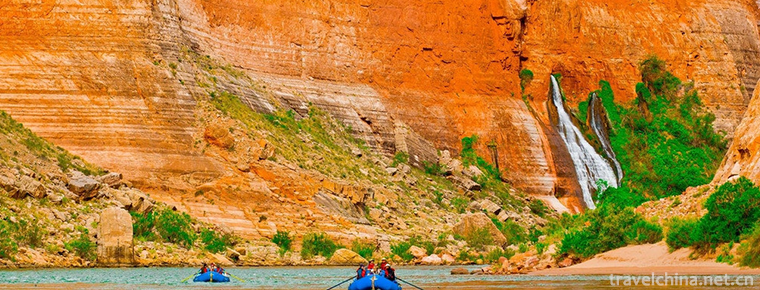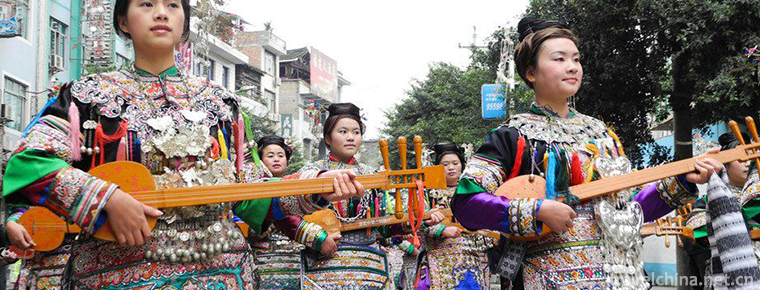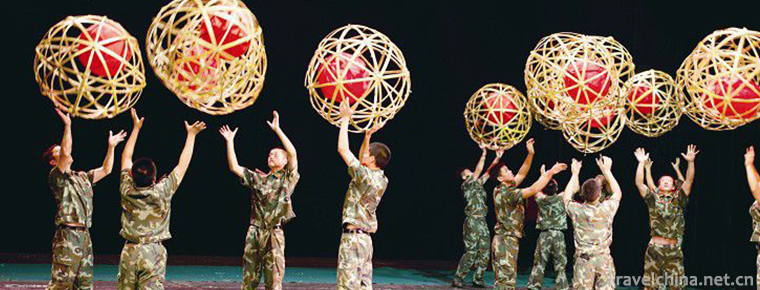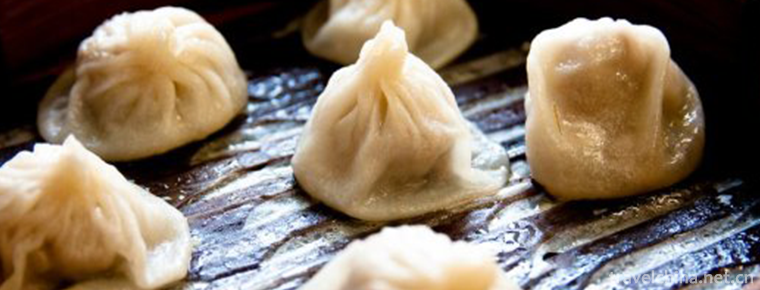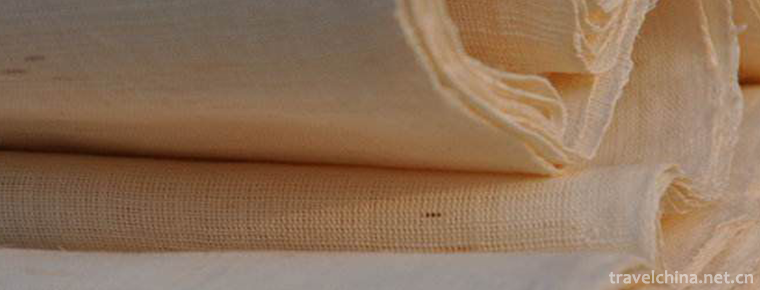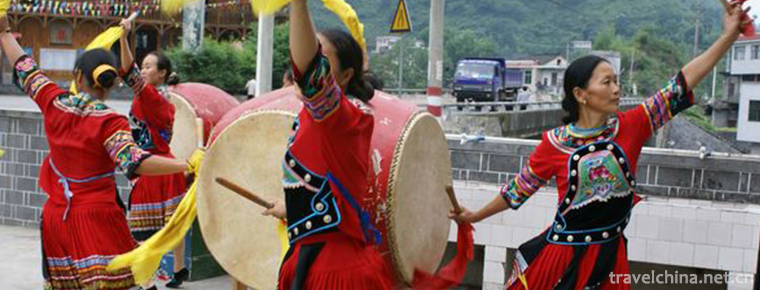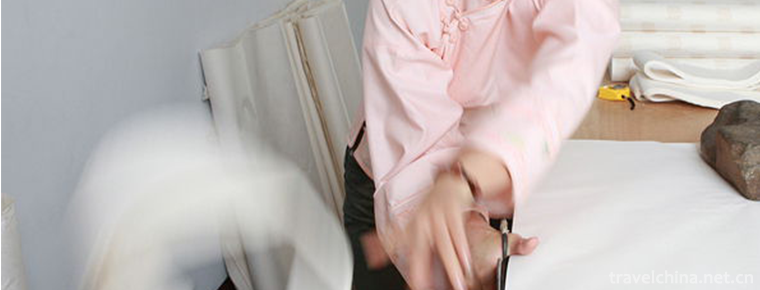Wanxiang Karst Cave
Vientiane Cave, the national AAAA-level tourist attractions, provincial geological parks, provincial scenic spots and provincial cultural relics protection units, has the reputation of "the first cave in China", "the first cave in northern China", "underground cultural corridor", "underground art palace".
Vientiane Cave is located on the hillside of Yangpang Village, Hanwang Town, Wudu District, Longnan City, Gansu Province, 10 kilometers away from the urban area. The cave has a history of 250 million to 300 million years. It is a large-scale and high artistic value discovered in Northwest China. It has both the magnificence of the northern country and the exquisite karst landform of the southern country. Among the 11 scenic spots that have been developed, there are more than 120 larger landscapes. According to the image, the three caves are Moon Palace, Heaven Palace and Dragon Palace.
In addition, in June 2007, a new hole was found in the scenic spot. It was formed about 50 million years ago and is in the initial stage of growth. The new cave is mainly protected and only more than 100 meters have been developed. However, the karst cave landscape in the early stage of the development of new caves is very rare in China. It not only has high aesthetic value, but also fills in the blank in the process from the embryonic development of caves to the formation and evolution of caves in China, and has very high scientific research value. In the 2008 Northwest China Tourism Marketing Conference and Tourism Equipment Exhibition, it was listed on the "Magic Northwest 100 Sceneries" list.
History
The karst landform of Wanxiang Cave was formed between 250 million and 300 million years ago. The Vientiane Cave is also known as the Immortal Cave and the Five Immortals Cave. It is said that five immortals once practiced here. Judging from the inscription of the tour in the cave period, Wanxiang Cave has attracted tourists from all dynasties as early as 1000 years ago. Up to now, there are more than 100 stone tablets in the cave in the Northern Zhou, Tang, Song, Yuan, Ming and Qing dynasties, and 960 inscriptions of poems. Among them, the Wanxiangxian Cave written by Justin Wan, a Wudu man in the Qing Dynasty, is the most representative one. He praised in his poem: "It's not the world, it's all-inclusive. What date is Wolong? When does the jade pillar hang? Who knows how to cut a hole and leave a smoke in the kitchen? Deep moss and slippery cave, where to meet immortals?
In 1993, it was approved by the Gansu Provincial People's Government as the provincial key cultural relics protection unit.
In 1999, it was approved as a provincial scenic spot.
In 2000, it was approved as a national AA-level scenic spot.
In 2004, it was approved by the Ministry of Propaganda of the Provincial Party Committee as a patriotic education base in the whole province.
In 2005, it was approved as a provincial geological park by Gansu Provincial Land and Resources Department.
On June 9, 2007, a new hole was found in Wanxiangdong Cave.
In August 2007, it was approved as a national AAAA tourist attraction.
In January 2017, the Vientiane Cave Tourist Reception Center was unveiled. The center is located at the east end of General Shi of Hanwang Town, Wuhu District and Hanwang Section of Yangtze River Avenue. The center covers an area of 267,000 square meters. It has a reception hall, ticketing center, tourist guide consultation reception area, tourist exhibition and parking lot, which are integrated into a comprehensive tourism service area. It mainly undertakes three functions: service, display and management. It provides convenient and fast "one-stop" services such as reception, information consultation and tourist Exhibition for tourists.
geographical environment
position
Wanxiangdong is located on the hillside of Yangpang Village, Hanwang Town, Wudu District, Longnan City, Gansu Province. It is 228 kilometers away from Jiuzhaigou, the world natural heritage, 455 kilometers away from Lanzhou City, the capital of Gansu Province, 550 kilometers away from Chongqing City, the central municipality directly under the Central Government, and 420 kilometers away from Chengdu City, the capital of Sichuan Province. Wanxiangdong Tourist Center is 11.5 kilometers away from Longnan Wudu Bus Station and 6.2 kilometers away from Longnan Station of Lanzhou-Chongqing Railway.
traffic
Highway: From Lanhai Expressway to Hanwang Toll Station, Self-driving Tourists will arrive at Wanxiangdong Tourist Center according to the sign instructions, which is 0.8 kilometers away from the toll station, or along 212 National Highway, Yangtze River Avenue, according to the sign instructions. Self-service tourists arrive at Wudu (Zhongloutan) Bus Station or Wudu East Bus Station in Longnan by passenger bus. When they arrive at Wudu Bus Station, they can take No. 1 bus to Circle Road and then transfer to No. 9 bus to Scenic Spot. When they arrive at East Bus Station, they can walk to Circle Road Bus Station and take No. 9 bus to Scenic Spot.
Railway: After arriving at Longnan Railway Station, take No. 9 bus to the scenic spot at the bus station opposite the square in front of the station.
Landform topography
The Wanxiang Cave is 1150 meters above sea level and 190 meters higher than Bailongjiang River. It belongs to the karst cave with the main cause of collapse. The general trend of Wanxiang Cave is south-west. It has been proved that the total length is about 5 kilometers. There are five caves, the widest is 22.5 meters, the highest is 40 meters, and the narrowest one can pass through. The sister cave on the east side is basically parallel to the main cave, with a length of about 600 meters, a height of 3-4 meters and a width of 6-9 meters. The new cave in Wanxiang is in its initial growth stage, and its formation time is about 50 million years ago. The discovery of the new cave fills in the blank of the development process from the embryonic cave to the formation and evolution of the cave in China, and has a very high scientific research value.
Honors
April 13, 2018, was included in "Magic Northwest 100 Scenes".
Scenery
Moon
The Vientiane Cave is like the entrance of the sky. On the top of the cave are inscribed the words "unique cave heaven" written by Gao Yihan and "Vientiane Cave" inscribed by Zhao Puchu in the period of the Republic of Gansu, Ningxia and Qinghai. Into the cave, is a large and spacious hall, is the first scenic spot - the Moon Palace. The entrance of the cave is a huge stone like a reclining animal, looking forward to a transparent cave like a full moon, like a rhinoceros looking at the moon, and also like examining visitors. The stalactites here are strange in shape, brilliant, or like the sun, or like the dawn moon, or clouds, or chaxiancao. Looking at them, they are full of exotic treasures, flowers, sea fruits, birds and beasts, and grains. They are really all phenomena competing, and the famous days are "all phenomena renewed". Moving forward, beautiful scenery emerges endlessly. The stone curtain, which is about 10 meters long and 2.8 meters wide, is composed of numerous stones. It is called "stone curtain curtain curtain curtain" from the empty. It strikes hard and makes a thunderous noise. It is like five stone pillars carved in white jade, handsome and upright, pointing directly to the sky, named "Wuyue Chao Tian". There are stalactites hanging from the top of the cave, and stalagmites thriving on the ground, vertically connected, less than 0.3 meters apart, named "Tiandi Jiaotai", commonly known as "Tian Ai Ge Needle".
Dragon Palace
Through a clean corridor, the ground was covered with clouds, and then came to the second scenic spot, the Dragon Palace. There are two dragons lying dormant on the dam. The scales float and shine as if they were flying at touch. Crossing the "chute" is "Huanglong Beach", and there are immortals "Liantanjing", which is unpredictable. It has a "fairy bed", a "fairy pillow" at the head of the bed, a "fairy lamp" on the wall and a "fairy walking" under the bed. There is a small hole in the inner corner, less than 1 meter high and about 1.7 meters deep. Visitors crawl through it. It is the narrowest place in the whole cave. It is called "wind tunnel" because of the cool wind.
Heavenly palace
After the wind tunnel, he entered the Heavenly Palace. Entering doors, passing through countless Jade-built Yao steps and carving towers and towers with stone pillars, beautiful scenery will continue to pour in. Here, people can lift all the fetters and let the imaginary wings fly freely: you say there are mountains of all shapes; you say water, there are galloping seas and flowing rivers; you say trees, there are birds on trees; you say bridges, there are bridges, there are pedestrians on bridges.
So far, visitors have traveled 4.5 kilometers before they visited 11 scenic spots of Vientiane Cave, more than 120 scenic spots, only half of the Vientiane Cave. How long is the Vientiane Cave? Nobody has come to the end yet. According to legend, there are heroic and thriving tourists who once carried luggage and dry food, stayed in the immortal bed, climbed the "ladder" the next day, crossed the "dangerous road", and then traveled 5 kilometers, traveled through caves, enjoyed the clear scenery, to the Dumu Bridge, you can hear the sound of chickens and dogs in Wenxian County. Therefore, there is a local saying that "Vientiane Cave is as big as the whole mountain".
New cave
Wanxiangdong New Cave (the sister cave of Wanxiangdong Cave) was discovered at 17:38 p.m. on June 9, 2007. Its formation time is about 50 million years ago. It is in the initial growth stage and has an inverted eight-character distribution with Wanxiangdong Cave. At present, the new cave is mainly protected. It has only developed more than 100 meters. The landscape inside the cave is as fine as silver silk, white jade is as greasy as Qiongshan, goose tube and stone flower are densely distributed. These cave landscapes in the early stage of development are very rare in more than 870 caves in the country. They not only have high aesthetic value, but also fill in the gap in the process of cave development from embryonic to formation and evolution, and have very high scientific research value. 。
Into the new cave, the first thing you can see is a piece of stalagmites with different shapes, just like all the gods in the sky, so it is named "the gathering of fairies". Next to it is a swan, whose beautiful posture is reflected in the lake behind her, which is also named Swan Lake.
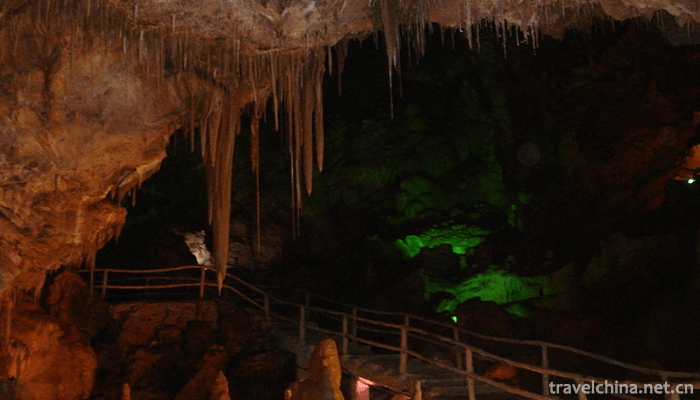

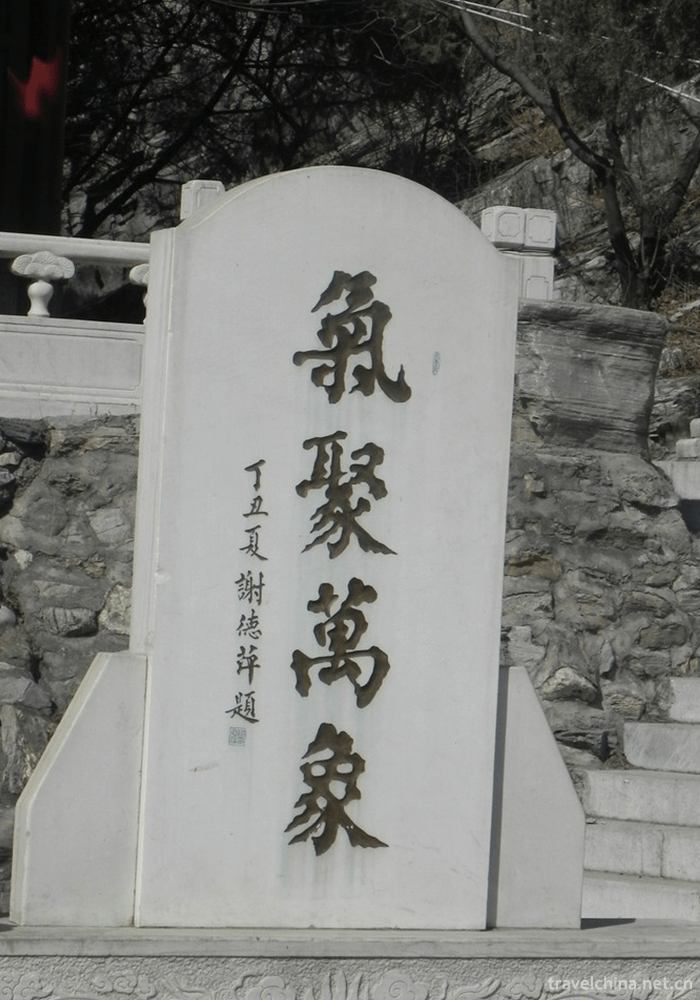
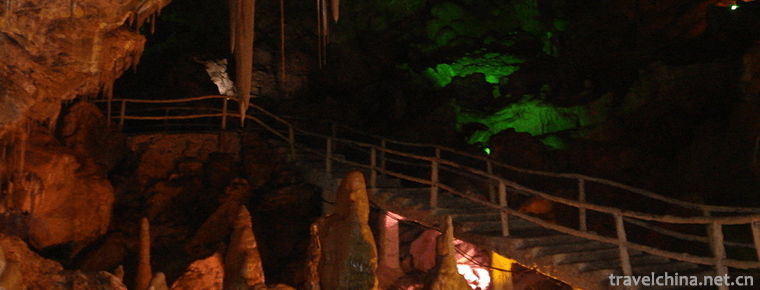
Wanxiang Karst Cave
-
Duck Blood in Chili Sauce
The main ingredients of hairy blood are duck blood, cooking techniques are mainly cooked, and tastes are spicy and spicy. Originated in Chongqing, popular in Chongqing and southwest China, it is a fam
Views: 463 Time 2018-10-27 -
Shibing Karst
Karst is karst. It is the general name of the geological function of water in dissolving rock (carbonate rock, gypsum, rock salt, etc.) mainly by chemical dissolution
Views: 244 Time 2019-02-08 -
Sama Festival of Dong Nationality
Sama Festival of Dong Nationality is spread in Rongjiang County, Liping County, Congjiang County and the surrounding areas of Dong Nationality in Guizhou Province
Views: 121 Time 2019-04-28 -
Rolling lamp
Rolling lantern is an art form of entertainment and self-enjoyment for the masses in Han folk festivals, and also a competitive performance to show the strength of villages. It is mainly prevalent in
Views: 189 Time 2019-05-02 -
Traditional Cuisine Skills of Shanghai Bengang Cuisine
Benbang cuisine is a nickname for Shanghai cuisine and an important school of Han traditional catering culture in Jiangnan area. The so-called Ben Gang is local. It is characterized by thick red sauce
Views: 157 Time 2019-06-13 -
Weaving Techniques of Summer Cloth
Wanzai summer cloth is completely manually woven. Its production process mainly consists of ramie treatment, yarn performance and weaving. It needs many processes to weave.
Views: 227 Time 2019-07-01 -
Encouragement of Miao Nationality in Western Hunan
Encouraged by the Miao people in Western Hunan Province, the traditional dance of Tujia and Miao Autonomous Prefecture in Western Hunan Province is one of the national intangible cultural heritage.
Views: 253 Time 2019-07-03 -
Xuan Paper Making Skills
The production of Xuan Paper, first through a leather production process and a grass production process, and then through more than 100 processes.
Views: 158 Time 2019-07-09 -
Social security in Deyang
In 2018, there were 748000 employees participating in basic endowment insurance, 345000 in unemployment insurance, 752000 in medical insurance, 384000 in industrial injury insurance and 399000 in maternity insurance. In the whole year,
Views: 353 Time 2020-12-14 -
Deyang Deyang transportation
By the end of 2018, the total mileage of Deyang highway was 8345.2 km, including 7861.0 km of grade highway, accounting for 94.2% of total highway mileage; 655.8 km of high-grade highway and 205.5 km of expressway. The railway operating
Views: 260 Time 2020-12-14 -
Meishan mineral resources
There are 25 kinds of minerals in Meishan, mainly including coal, natural gas, iron, copper, lead, zinc, manganese, placer gold, glauberite, gypsum, bentonite, phosphorus, dolomite, cement limestone, magnesite, granite for facing, vein quartz, crystal, quartz sandstone,
Views: 278 Time 2020-12-18 -
Yibin science and technology
In 2019, there are 34 new high-tech enterprises, 13 provincial science and technology achievements transfer and transformation demonstration enterprises, 2 provincial science popularization bases and 6 Municipal Science Popularization base
Views: 332 Time 2020-12-18

